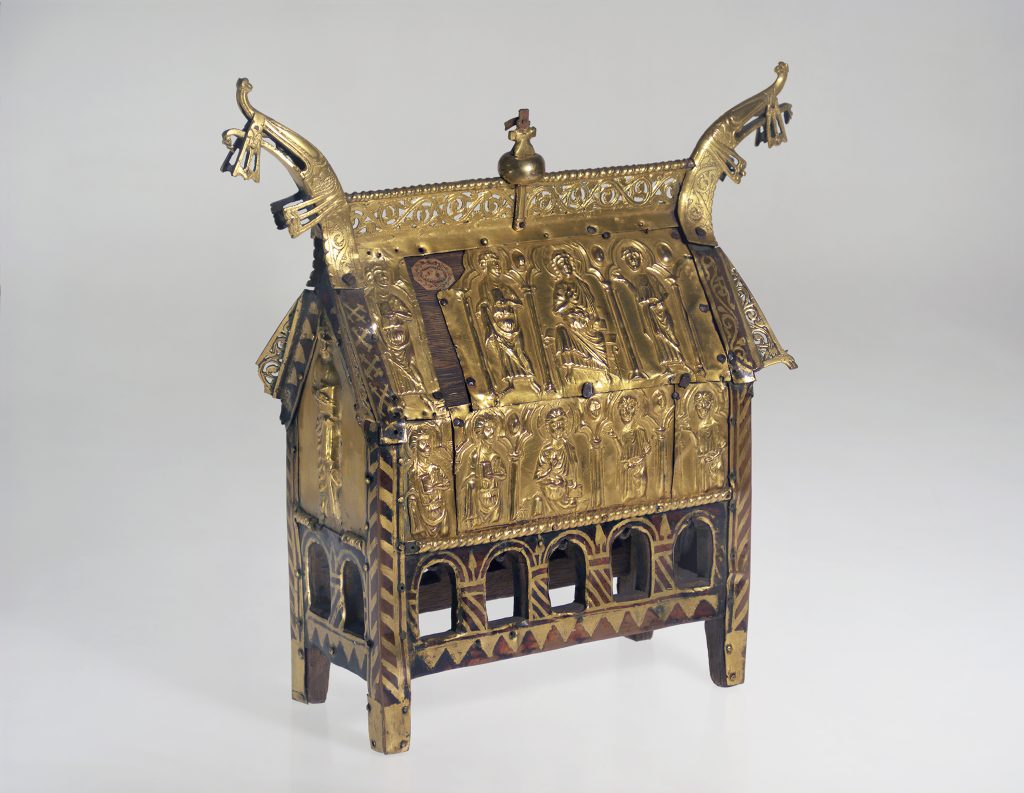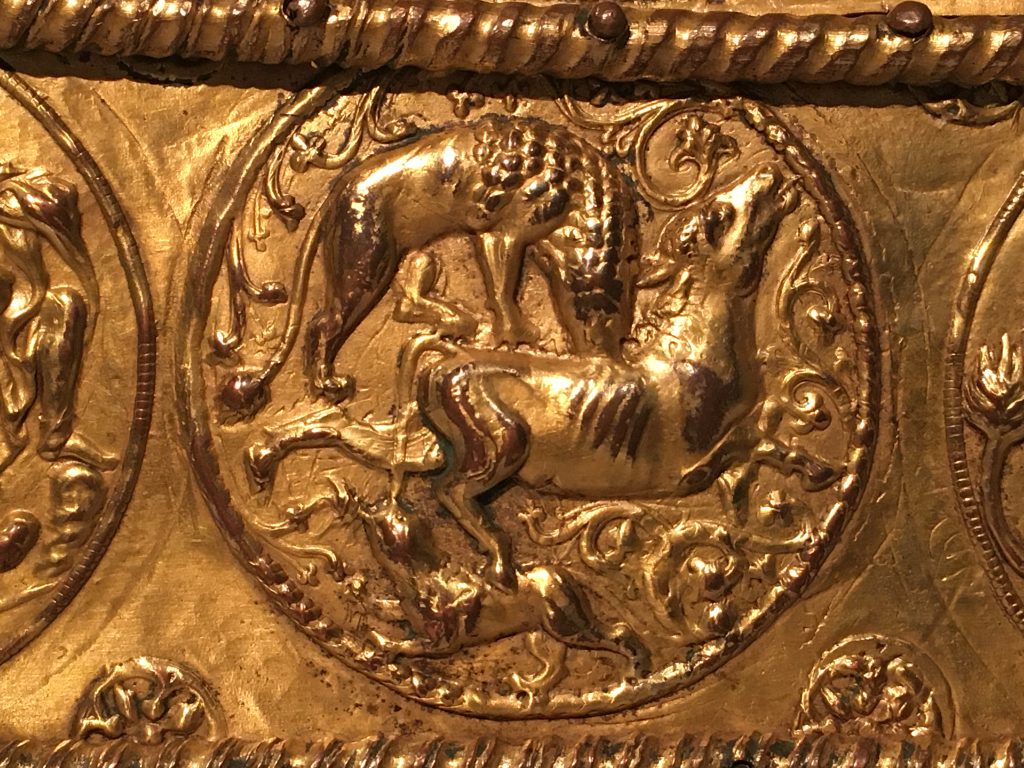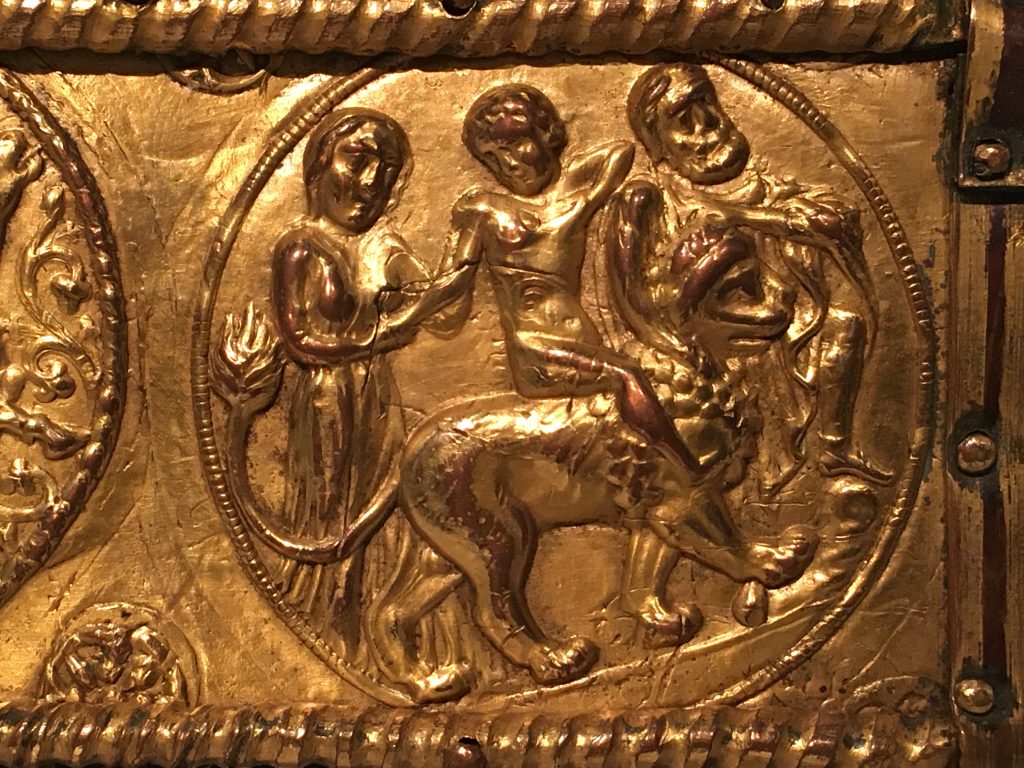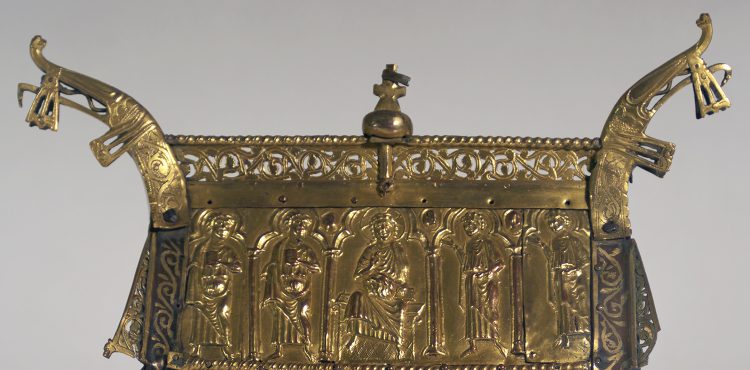
This relic shrine is built from oak and covered with bas-reliefs of gilded copper. The shrine stems from the stave church, abandoned in 1808, of St Thomas – probably St Thomas Becket – on the Filefjell, located on a plateau along an important road between eastern and western Norway. The shrine has the form of a house with a saddle roof; the gables are decorated with dragons’ heads similar to those found on stave churches (as in Borgund). The reliquary casket rests on a support in the shape of an arcade (in Norwegian: ‘svalgang’). On the roof sides, Christ is represented amidst his apostles. The same recur, as half-figures, on one of the long sides, whereas the opposite side features scenes set inside three medallions. The short sides each show a further standing apostle, of which one is framed by enthroned apostles inside tendrils.

The two flanking medallions show a boy riding on a lion, a motif taken from classical mythology that goes back to the Dionysian procession often represented on coins and gems. These themes from classical antiquity were reinterpreted in a Christian context. For example, the French monk Pierre Bersuire (c. 1290-1362) identified Dionysos (=Bacchus) with Christ in his interpretation of Ovid’s Metamorphoses. The motif of hunting animals found on the central medallion also stems from antiquity and was quite common in medieval Christian art; for example, it is shown on the throne of an ivory Virgin and Child of northern French origins preserved in the Museo Nazionale del Bargello in Florence (inv. no. 88C). These ancient motives may have migrated to the North via coins or as decorations found on cultic objects from a Christian context.

Excavations on the site of the church of All Saints in Bergen in 1865 brought to light a fragment showing identical apostles’ reliefs, which Harry Fett interpreted as an indication that the Filefjell shrine was probably produced in Bergen. In Norway, the surviving total of thirteen reliquary shrines and fragments share strong similarities. Their shape seems to follow a model that Thor Kielland, and more recently Øystein Ekroll, assume to have been set by one of the great medieval relic shrines that existed in Trondheim (St Olav), Oslo (St Hallvard) and Bergen (St Sunniva), all of which vanished in the Reformation. The survival of a number of smaller shrines in Norway is surprising, because they lost their cultic function as storage for relics with the transition to Protestantism. In the Kingdom of Denmark-Norway, practically all church treasures were confiscated during the Reformation and melted down by the Crown.
Norway, 1230-1250
From Filefjell (Valdres), in the museum since 1828
Oak, gilded copper sheets
H 37.5 x W 40 x D 15 cm
Inv. no. MA 52
